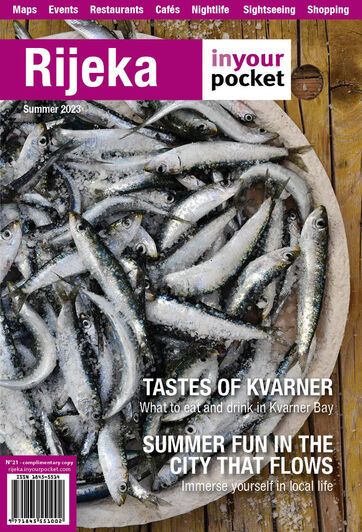Saint Vitus - Sveti Vid
The Slavs took St Vitus to their hearts as a patron saint because his name means something like “all-seeing” in Slav languages – indeed, he is the patron saint of eyes and vision, and of the city of Rijeka. So much did his image become part of the city that Rijeka was known in the Middle Ages either as “Terra Fluminis Sancti Viti” (in Latin) or “Rika Svetog Vida” (Croatian). You can see his image on a stained glass window in St Vitus' Cathedral and in many other items of the city's heraldry. St Vitus was born in Sicily at the end of the 3rd Century, and was martyred by the Roman Emperor Diocletian (he who built the great palace at Split). Prague’s gothic cathedral is also named after him.
Memorial house of Ivana Brlić Mažuranić
The neighbourhood of Sušak that lies across the river was once a separate settlement. It got its name from the Croatian verb “sušiti” – “to dry”, since once upon a time there were large areas used for drying the laundry washed in the many springs here. The coming of the railway brought wealth and expansion, and a host of fine buildings and palaces grew up and today line the bank on the east side of the Rječina. The area of land between the centre of Rijeka and Sušak, called the Delta, was the dividing line between two states between the World Wars. Rijeka fell under the jurisdiction of Italy, and died a death due to competition from the larger Italian ports, while Sušak prospered as the main port of the Kingdom of Serbs, Croats and Slovenes. Take a walk through the atmospheric streets and you come to the neighbourhood of Pećine that lies on the shore. It was the elite residential during Austro-Hungarian rule, and it’s worth a wander. The Ružić villa, where members of the political and literary families Ružić and Mažuranić lived, is particularly noted (Pećine no. 5). Industrialist Đuro Ružić was responsible for building many of Sušak’s fine houses. His relative by marriage, Ivana Brlić-Mažuranić, was an author of much-loved children’s books. You can see a beautifully illustrated edition of one of her books, “Tales of Long Ago” in English translation in the family’s library, which is listed as a cultural monument.
Karolina Riječka
If you notice a lot of references to a certain Karolina when you're in Rijeka, that's because she's a much-loved historical figure from the town. Not without good reason – there's nothing better than a strong woman, and more courageous than this you could not find. During the Napoleonic wars, a British squadron attacked Rijeka to wrest it from the French, but started a campaign of plunder and torching. Brave (and pretty) Karolina approached the British squadron leader and begged him to spare Rijeka's people – and, amazingly, he did. Wow, and they didn't even have Max Factor in those days. Apparently only one cannonball was fired – the one you see embedded in the wall of St Vitus' Cathedral. Enjoy a drink in the beautiful Karolina bar on Rijeka's quayside, where you'll see pictures of Karolina of Rijeka, or try the light, fluffy Karolina cake, a speciality of the Cont patisserie.
Adamić’s witnesses
Simeon Adamić was a wealthy merchant who built a lot of wonderful buildings in Rijeka, including a theatre (pulled down long ago). People sometimes were jealous of his apparent luck, so when they heard that one day he had found some archeological remains on his estate, they reported him to the authorities, saying that he had found treasure. He was sent to prison for not reporting the find. He was eventually released, since it was decided that the remains were not really worth worrying about. Then, he cunningly decorated the frontage his beautiful house on the Rječina riverbank in Sušak with grotesque busts of the 14 people who had falsely accused him. How embarrassing! Nowadays, these busts stand in the statue park in the gardens of the Governor’s Palace.
The Glagolitic Script
The Croatian language was originally written in the Glagolitic alphabet. The origins of this alphabet are still debated, but the story probably goes back to 1st century Greece, when two priests, brothers Cyril and Methodius, were sent west to convert people to Christianity. They used an alphabet, possibly derived from a Greek dialect, to translate the Bible. This alphabet took root in Croatia, developed and nurtured by the influential religious community. Since it was never much used further north and west, and was later replaced by the Cyrillic script to the east, it became a unique aspect of Croatian culture. Many important state and church documents, and a smaller number of works of literature were written in the Glagolitic script; and printing presses were established in Rijeka and Senj. Glagolitic culture was strongest in the Kvarner region, in Istria and some parts of Dalmatia, and had an epicentre on Krk.
The Zamet Cave
Thought to be between 20,000 and 30,000 years old, this cave attracts thousands of visitors to the Zamet neighbourhood in the western suburbs of Rijeka. If you feel like cooling off and indulging in a little speliology, give the number a call: tel. +385-51 33 58 82.





Comments